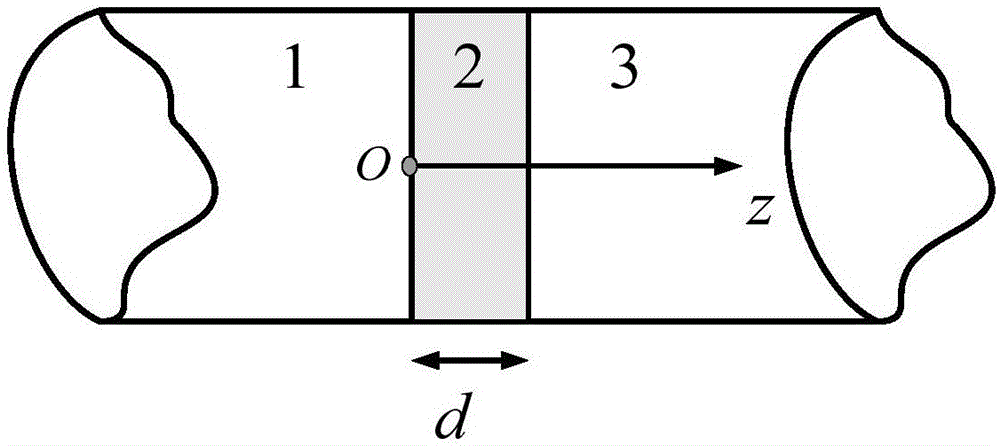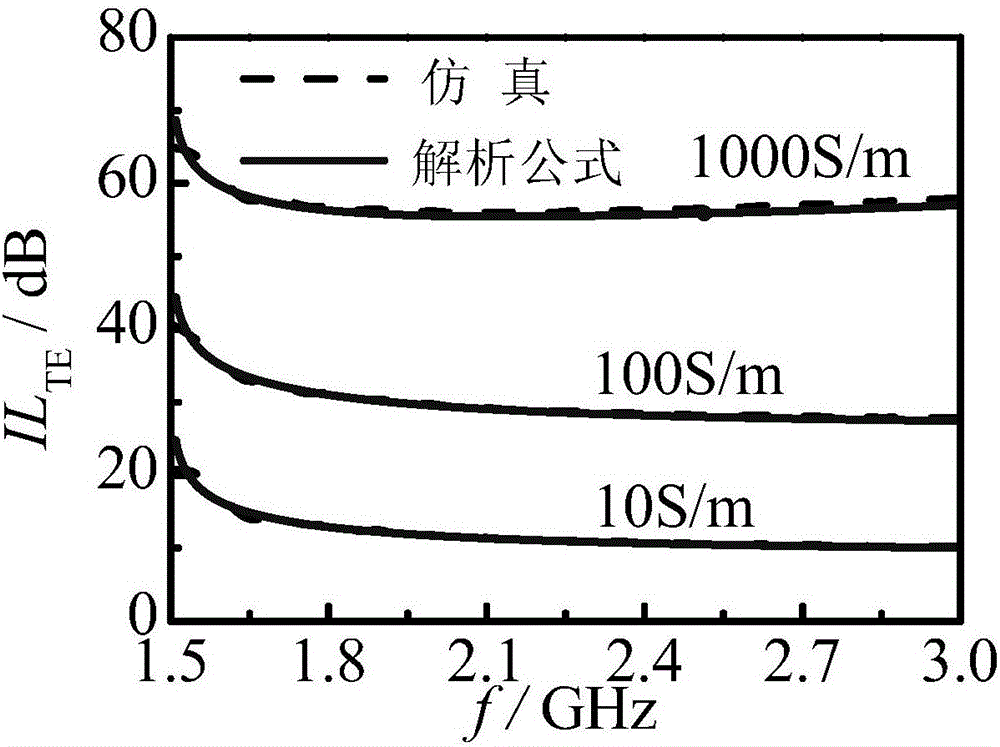Material electric field shielding effectiveness testing system and method based on rectangular waveguide
A rectangular waveguide and electric field shielding technology, which is applied in the field of material electric field shielding effectiveness testing systems based on rectangular waveguides, can solve problems such as inability to test shielding effectiveness, and achieve the effect of simple operation
- Summary
- Abstract
- Description
- Claims
- Application Information
AI Technical Summary
Problems solved by technology
Method used
Image
Examples
Embodiment 1
[0035] A material electric field shielding effectiveness test system based on a rectangular waveguide, the system includes: a rectangular waveguide, a network analyzer, a coaxial TEM mode—rectangular TE 10 Mode converters and RF coaxial cables;
[0036] The rectangular waveguide is a cylindrical shell with a rectangular cross-section made of a metal plate, and the middle of the cylindrical shell is transversely disconnected for placing the material to be tested.
[0037] Coaxial TEM Mode - Rectangular TE 10 There are two mode converters, which are the first coaxial TEM mode—rectangular TE 10 Mode Converter and Second Coaxial TEM Mode - Rectangular TE 10 Mode Converter, First Coaxial TEM Mode - Rectangular TE 10 The first end of the mode converter is connected to the first end of the rectangular waveguide, the second coaxial TEM mode—rectangular TE 10 The first end of the mode converter is connected to the second end of the rectangular waveguide.
[0038] There are two sec...
Embodiment 2
[0041] The method for measuring the effectiveness of electric field shielding using the system in Embodiment 1 includes the following steps:
[0042] Step 1, measure the length and width of the cross-section of the rectangular waveguide, and calculate the TE of the rectangular waveguide 10 Mode cutoff frequency f c1 and the TE of the rectangular waveguide 01 Mode cutoff frequency f c2 , calibrate the network analyzer, adjust the test frequency range of the network analyzer to be f c1 ~ f c2 , connect the test device according to the above requirements.
[0043] Step 2, when the material to be tested is not placed in the rectangular waveguide, operate the network analyzer to measure the parameters
[0044] Step 3, when placing the material to be tested in the rectangular waveguide, operate the network analyzer again to measure the parameters
[0045] The material to be tested is required to satisfy σ / ωε>1000, wherein: σ is the electrical conductivity of the material t...
Embodiment 3
[0109] This embodiment is a preferred implementation of the above two embodiments.
[0110] Take a rectangular waveguide with section length a=10cm, width b=5cm, conductive plate ε c =ε 0 , μ c =μ 0 and d=1 mm. TE can be calculated 10 Mode cut-off frequency f c1 = 1.5GHz, TE 01 Mode cut-off frequency f c2 = 3GHz.
[0111] image 3 When the conductivity of the conductive plate is 10S / m, 100S / m and 1000S / m respectively, the conductive plate to TE 10 Comparing the calculation results of the mode insertion loss analytical formula (solid line, formula (18)) and the full-wave simulation results, it can be seen that the two curves are in good agreement, which verifies the correctness of the analytical formula.
PUM
 Login to View More
Login to View More Abstract
Description
Claims
Application Information
 Login to View More
Login to View More - R&D
- Intellectual Property
- Life Sciences
- Materials
- Tech Scout
- Unparalleled Data Quality
- Higher Quality Content
- 60% Fewer Hallucinations
Browse by: Latest US Patents, China's latest patents, Technical Efficacy Thesaurus, Application Domain, Technology Topic, Popular Technical Reports.
© 2025 PatSnap. All rights reserved.Legal|Privacy policy|Modern Slavery Act Transparency Statement|Sitemap|About US| Contact US: help@patsnap.com



